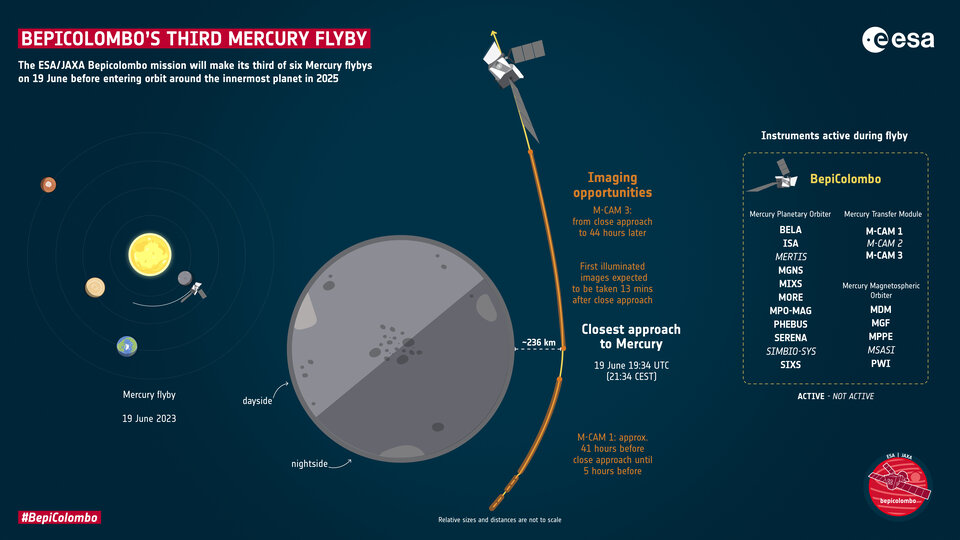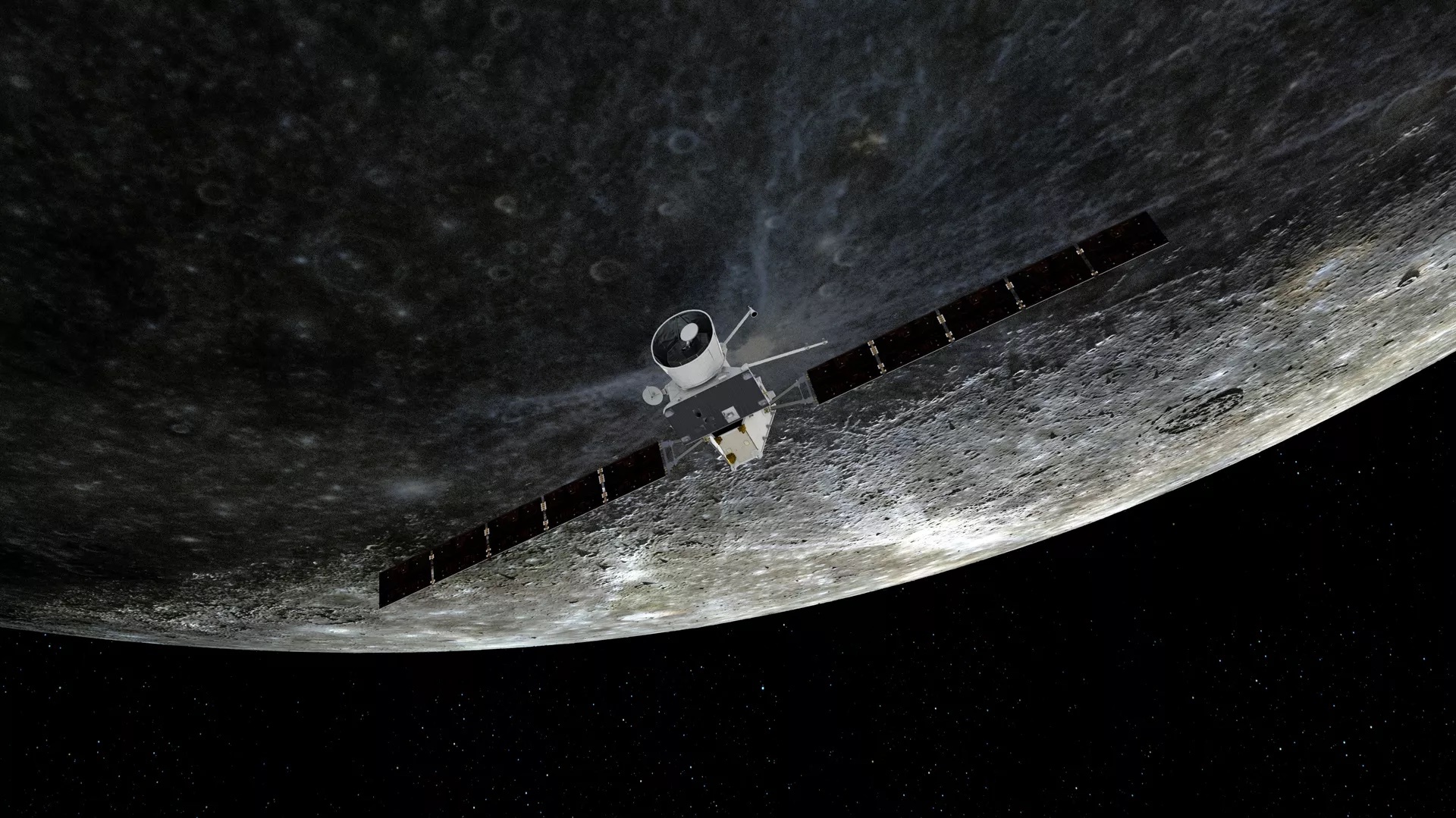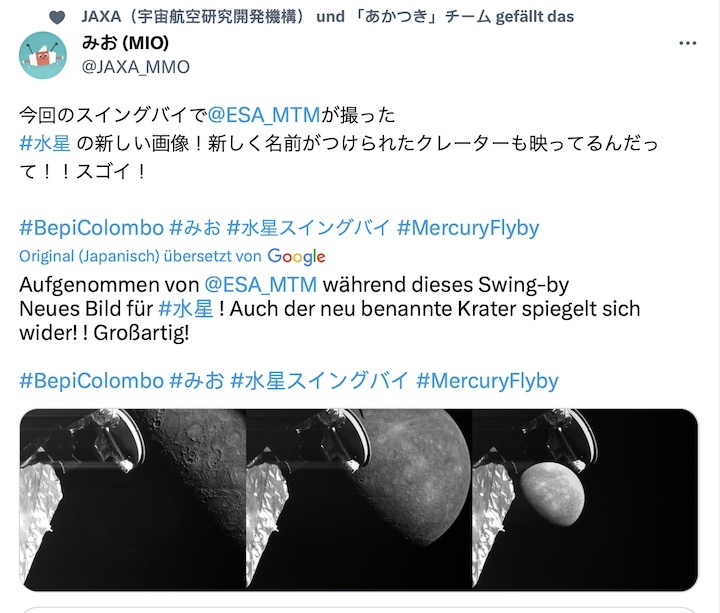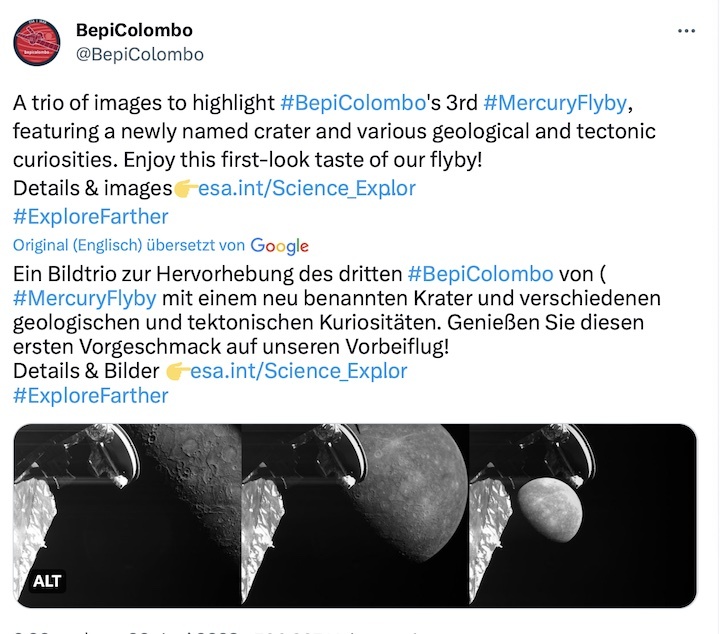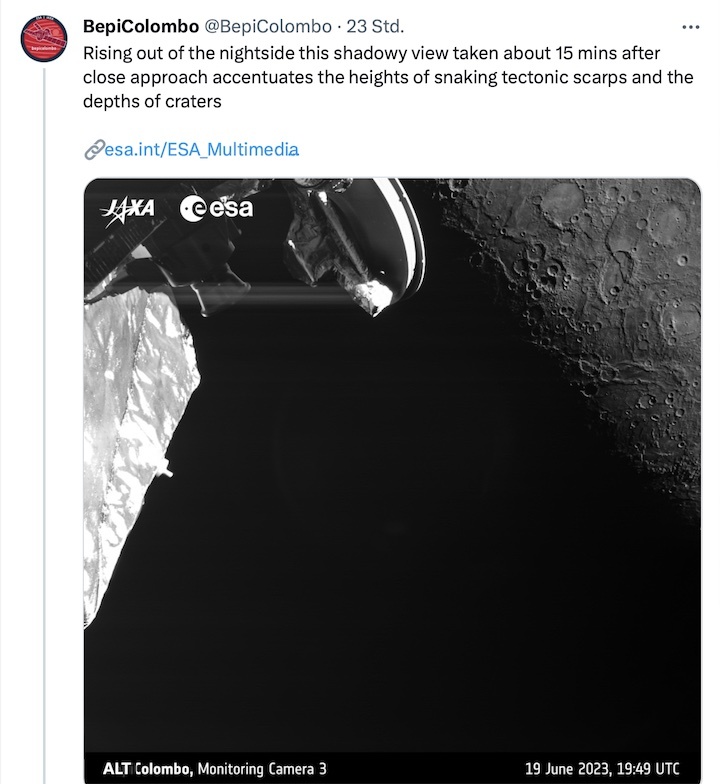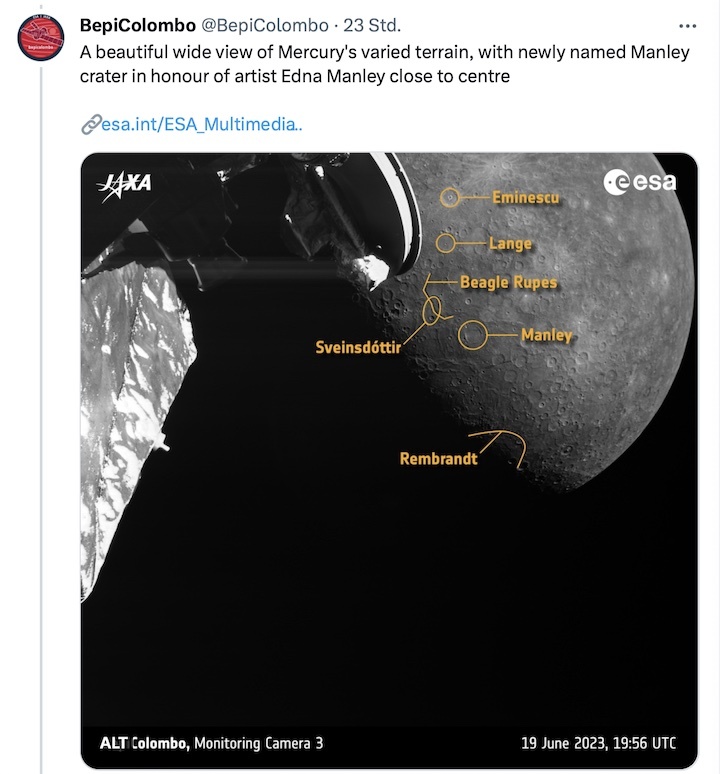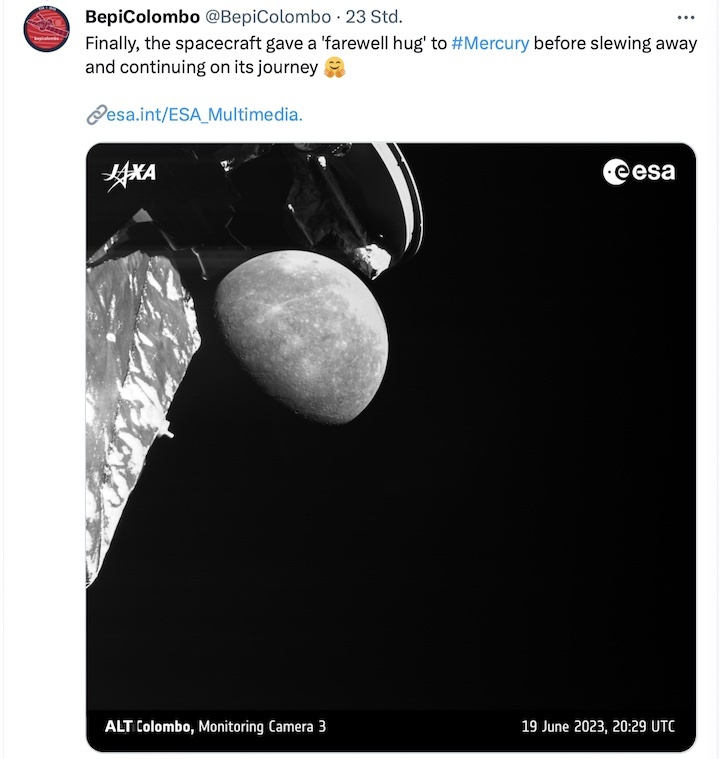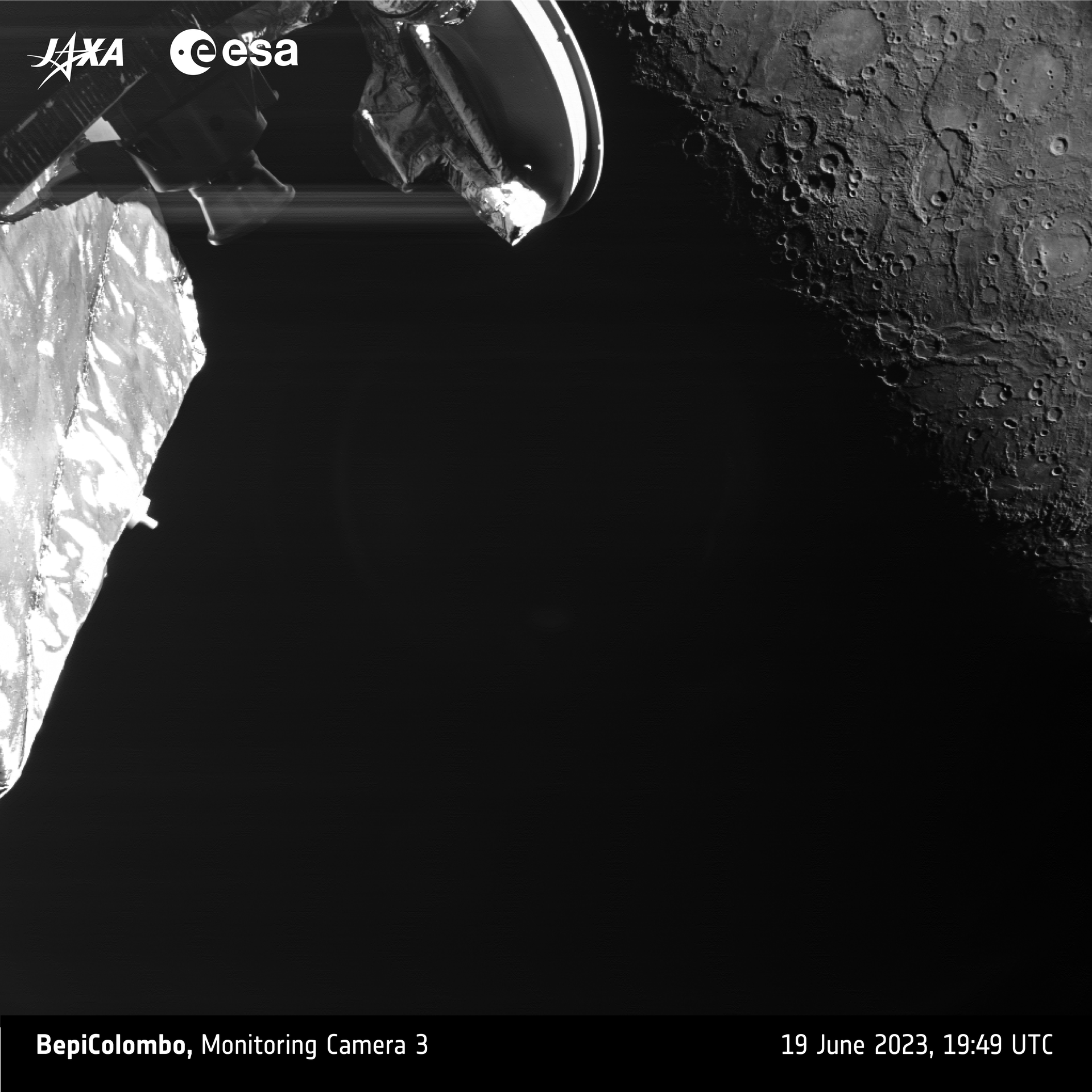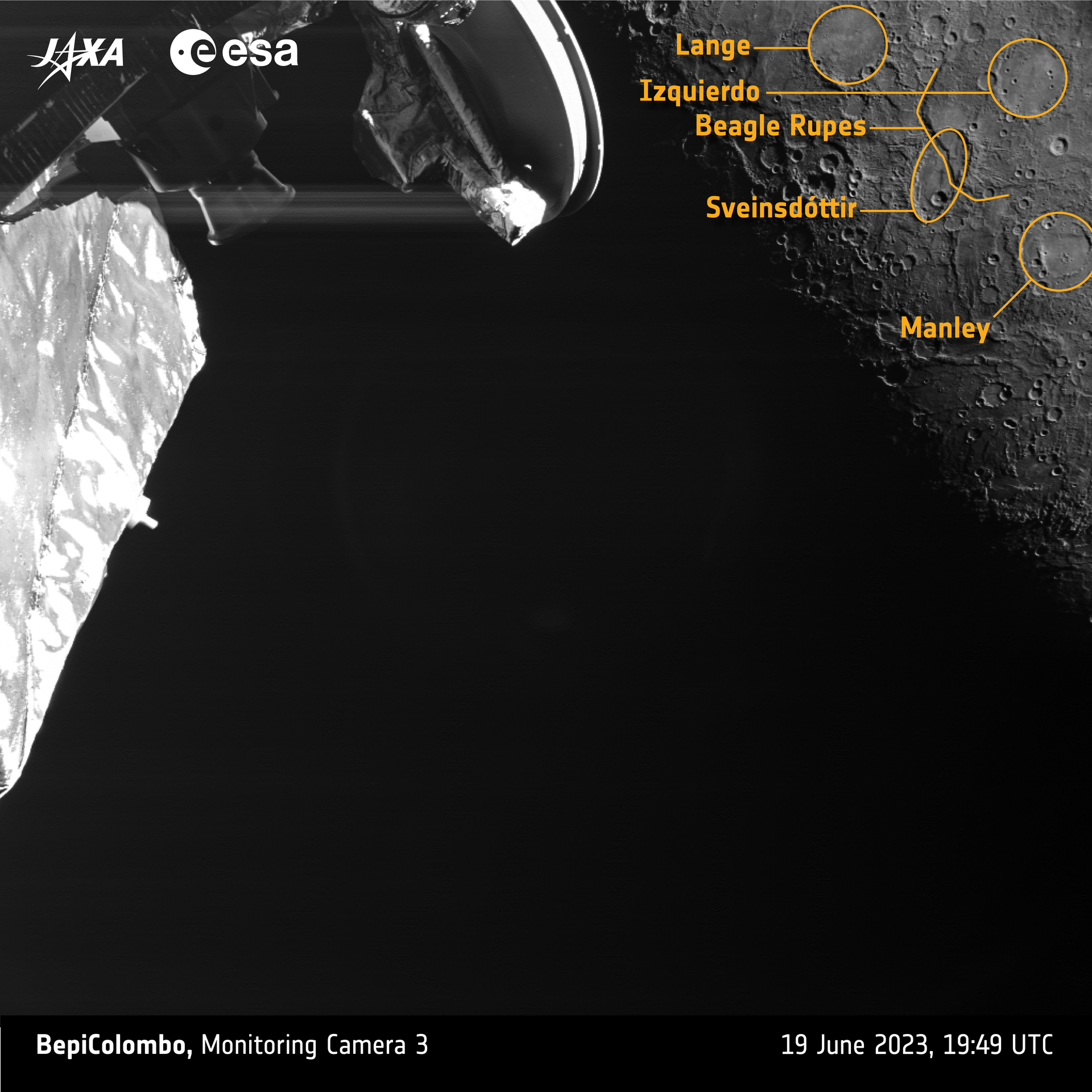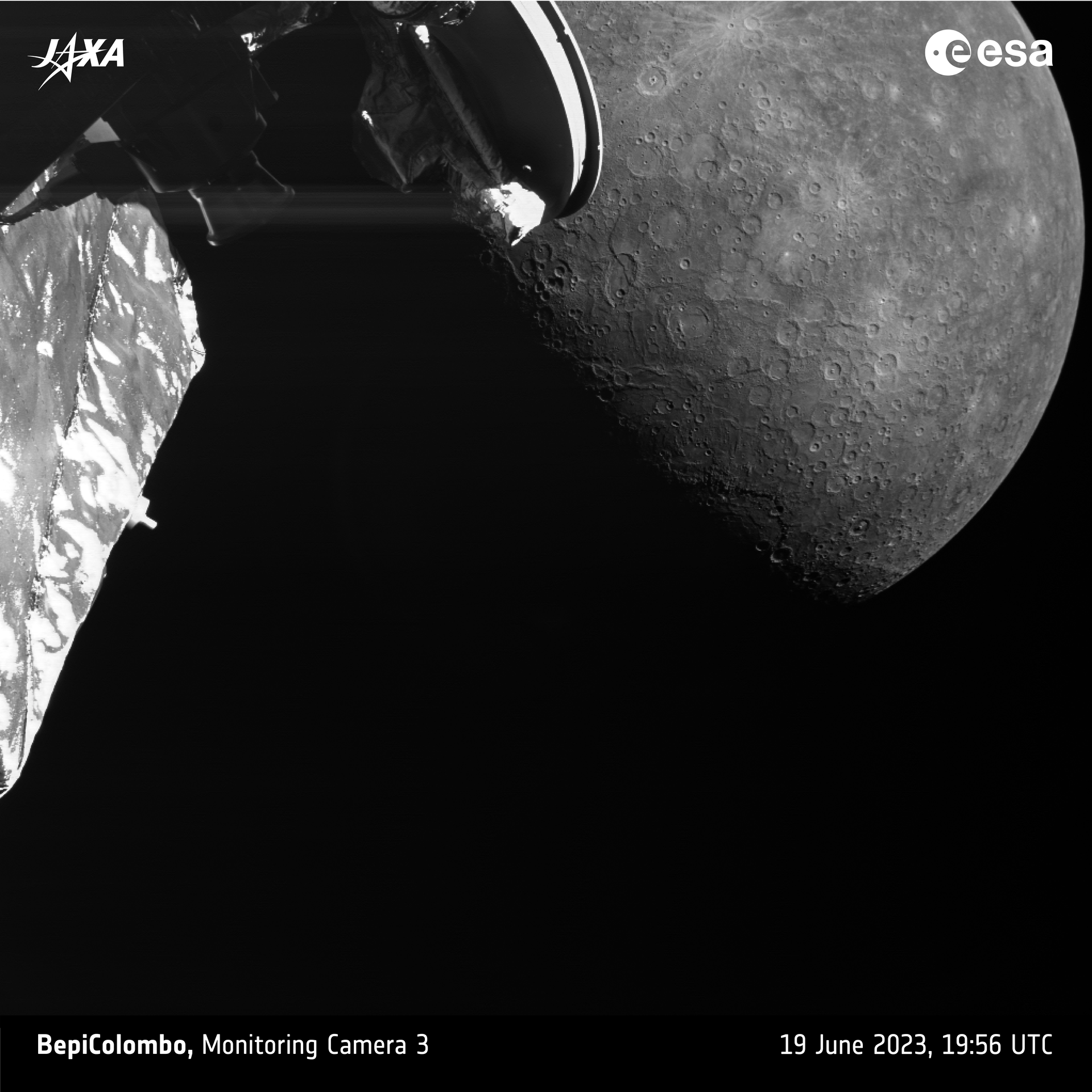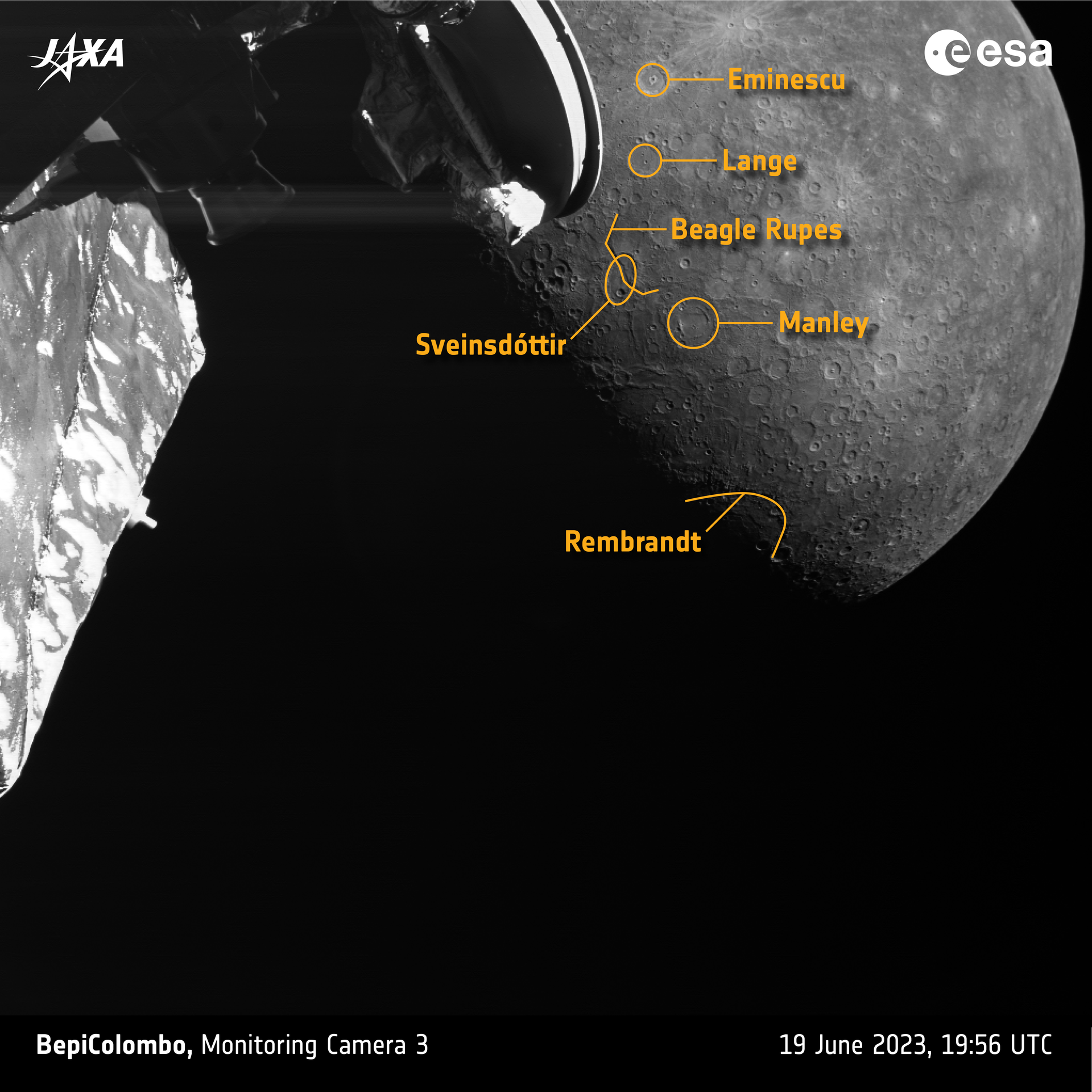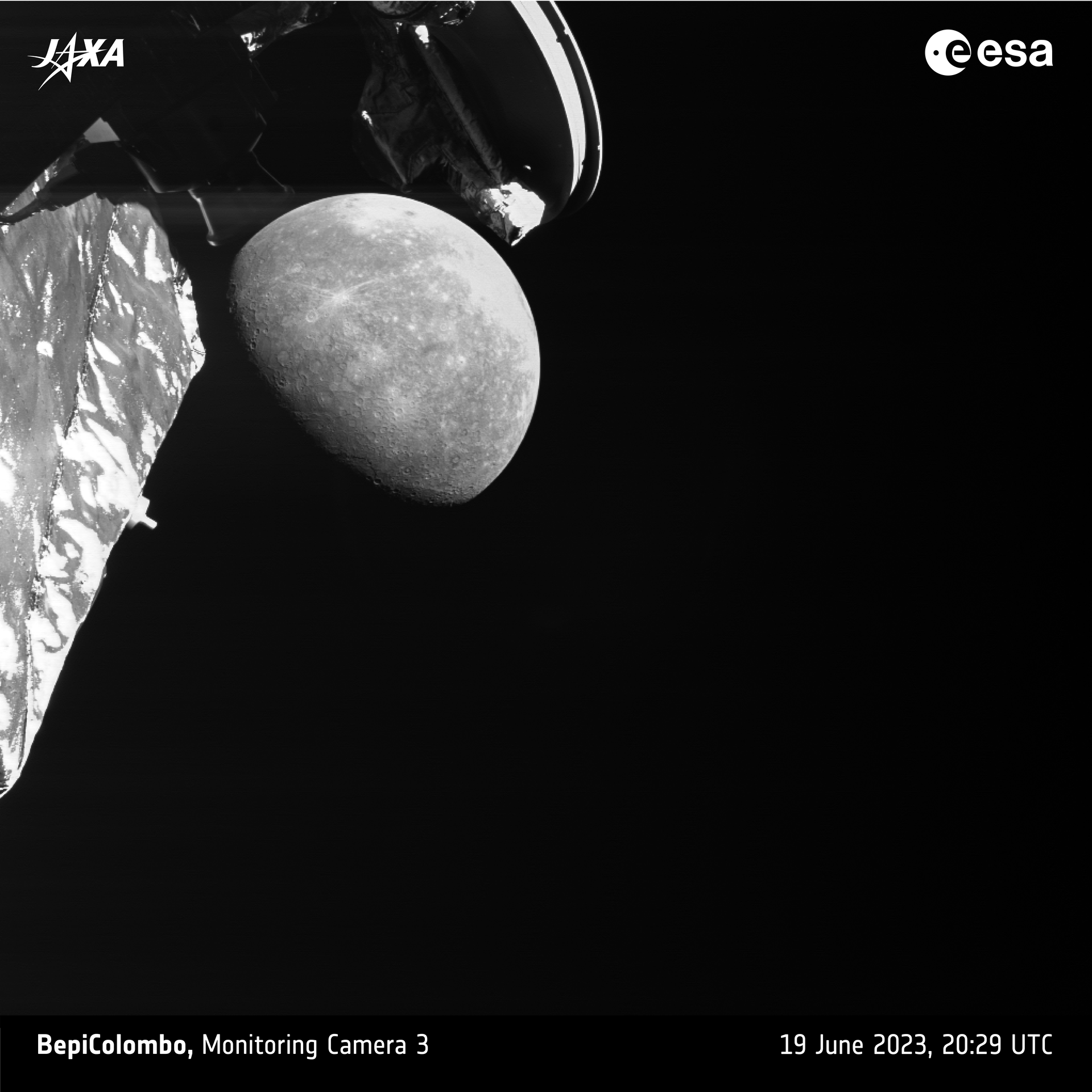15.06.2023
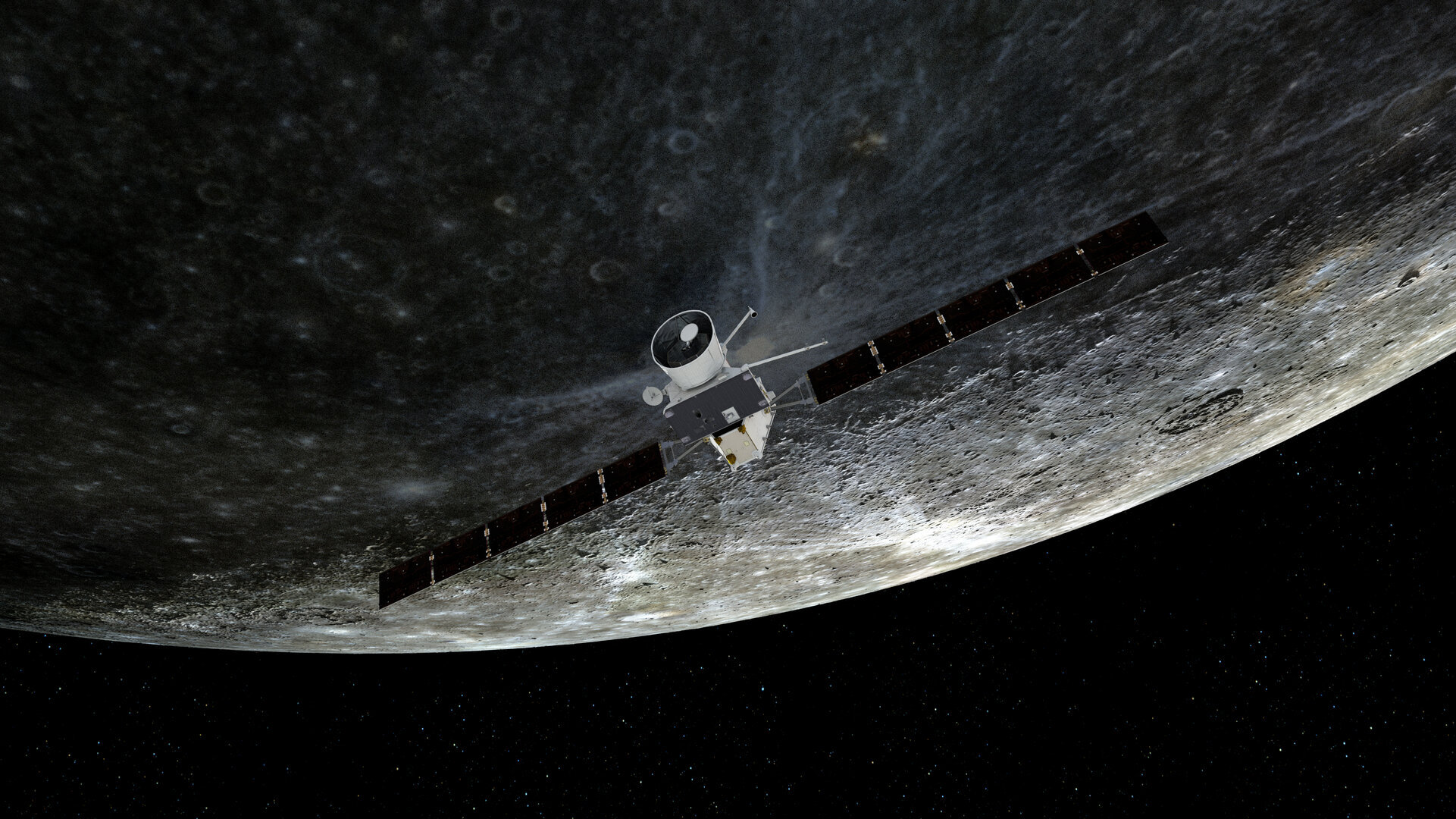
BepiColombo braces for third Mercury flyby
The ESA/JAXA BepiColombo mission is gearing up for its next close flyby of Mercury on 19 June, when it will pass the planet’s surface at an altitude of about 236 km.
This is the third of six gravity assist flybys at Mercury that ESA’s spacecraft operation team is guiding BepiColombo through. The flybys, together with more than 15 000 hours-worth of challenging solar electric propulsion operations, are needed to help the spacecraft fight against the enormous gravitational pull of our Sun, so that it can eventually lose enough energy to be captured into Mercury’s orbit in 2025.
The closest approach of Monday’s flyby will take place at 19:34 UTC (21:34 CEST). BepiColombo will approach on the night side of the planet, meaning the most interesting views of Mercury’s surface will be recorded by the spacecraft’s monitoring cameras from about 13 minutes later. The first images are expected to be released on 20 June.
Flybys and thrusters
While a welcome opportunity to snap images and fine-tune science instrument operations at Mercury before the main mission begins, the primary reason for the flyby is to use the planet’s gravity to guide BepiColombo’s path through the inner Solar System.
The mission launched into space on an Ariane 5 from Europe’s Spaceport in Kourou in October 2018 and is making use of nine planetary flybys: one at Earth, two at Venus, and six at Mercury, to help steer into Mercury orbit.

After this flyby, the mission will enter a very challenging part of its journey to Mercury, gradually increasing the use of solar electric propulsion through additional propulsion periods called 'thrust arcs' to continually brake against the enormous gravitational pull of the Sun. These thrust arcs can last from a few days up to two months, with the longer arcs interrupted periodically for navigation and manoeuvre optimisation.
Cosmic slingshot
Mercury is the least explored rocky planet of the Solar System, with one of the main reasons being that getting there is really difficult. As BepiColombo gets closer to the Sun, the powerful gravitational pull of our host star accelerates the spacecraft towards it.
Gravity assist flybys are a great way to change course using very little fuel, but they are far from simple.
Flight controllers are ready to precisely guide BepiColombo so that it passes Mercury at exactly the right distance, from the right angle, and with the right velocity. All of this was calculated years ago, but has to be as close to perfect as possible on the day.
“As BepiColombo starts feeling Mercury’s gravitational pull, it will be travelling at 3.6 km/s with respect to the planet. That’s just over half the speed it approached with during the previous two Mercury flybys,” explains ESA flight dynamics expert Frank Budnik.
“And this is exactly what the point of such events is. Our spacecraft began with far too much energy because it launched from Earth and, like our planet, is orbiting the Sun. To be captured by Mercury, we need to slow down, and we’re using the gravity of Earth, Venus and Mercury to do just that.”

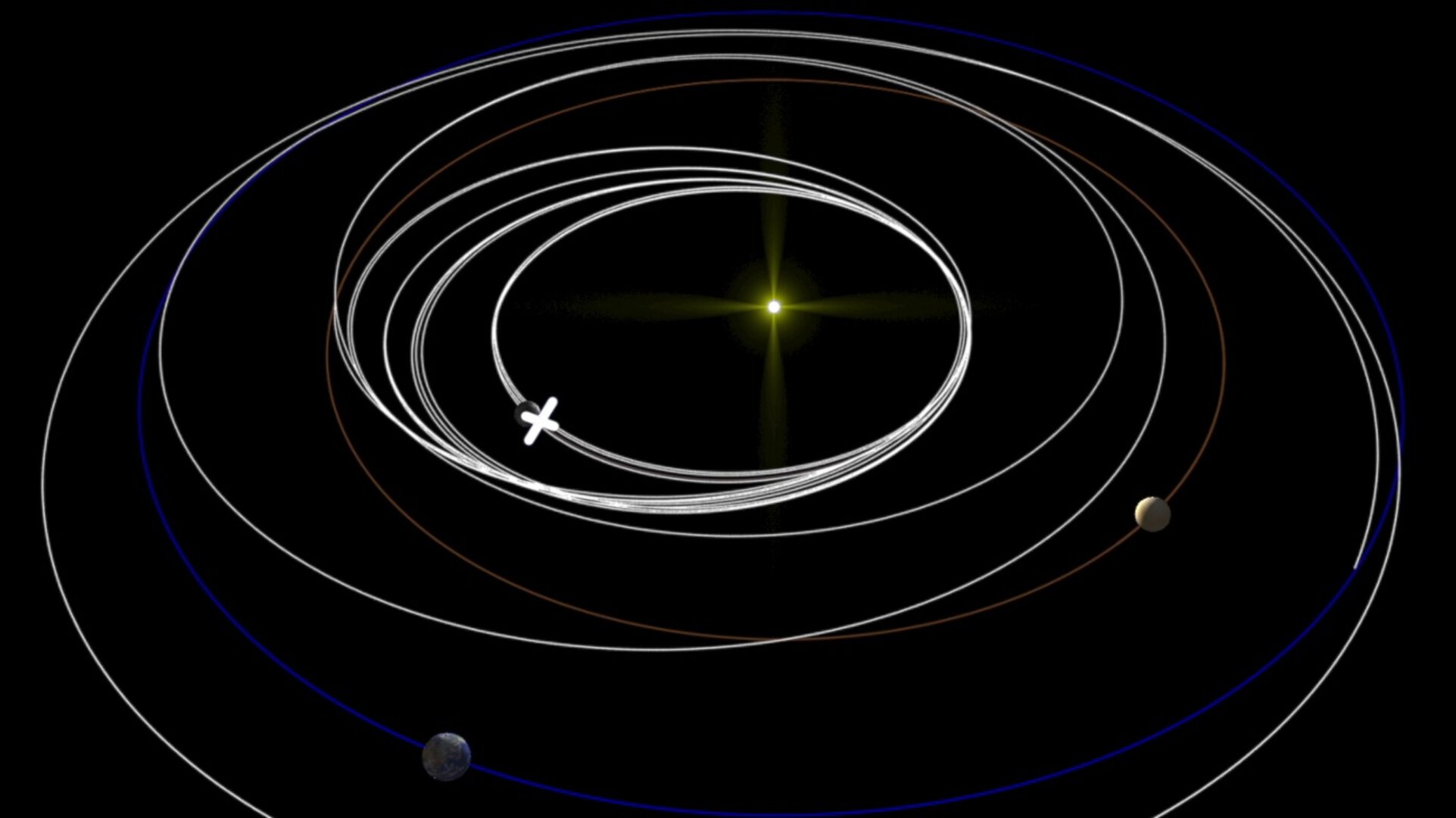
Access the video
On 19 May, teams at mission control performed the largest chemical propulsion manoeuvre the mission has seen. The purpose was to correct errors in BepiColombo’s orbit that had accumulated as a result of thruster outages during the previous one-and-a-half month-long, slow electric propulsion arc. Correction manoeuvres on the approach to a flyby are part of normal operations; without this one BepiColombo would be 24 000 km too far from Mercury and on the wrong side of the planet!
To be on the safe side, and to ensure no chance the mission could end up on a collision course with Mercury, the latest manoeuvre was designed so that BepiColombo would pass the rocky planet at a slightly higher altitude than needed. The extra margin was a good bet and cancelled out previous errors that had crept in as the spacecraft traversed millions of kilometres through space. One week out from the flyby BepiColombo is now predicted to pass the planet’s surface at an altitude of 236 km (+/- 5 km).
At the moment of close approach BepiColombo will have accelerated to 5.4 km/s with respect to Mercury courtesy of the planet’s gravitational pull, but the flyby will overall reduce the spacecraft’s velocity magnitude compared to the Sun by 0.8 km/s, and change its direction by 2.6 degrees.
“This is the first time that the complex solar electric propulsion method is being used to get a spacecraft to Mercury, and it represents a big challenge during the remaining part of the cruise phase,” says Santa Martinez Sanmartin, ESA’s BepiColombo mission manager. “We have already adapted our operations concept to have additional communications passes with our ground stations, enabling us to recover faster from thruster interruptions and to improve orbit determination. And all the while this is working with communications delays of more than ten minutes due to the time it currently takes light signals to travel between Earth and the spacecraft.”
Flight dynamics is both a science and an art. Orbits, manoeuvres and flybys are determined years in advance, but spacecraft are not perfect mathematical objects. This is why teams always err on the side of caution, factoring in multiple opportunities for manoeuvres to hone and correct a spacecraft’s actual path.
Tastes of science
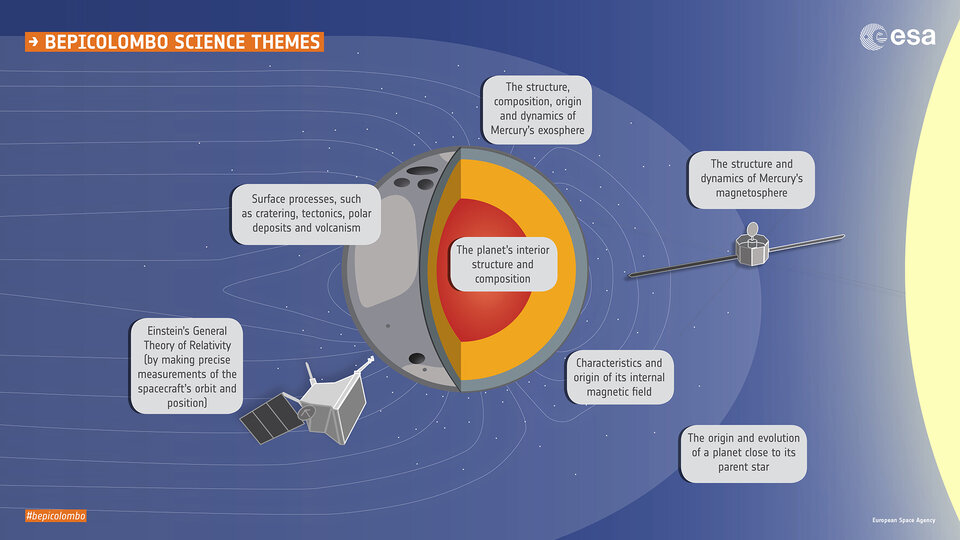
While many instruments have been activated during the cruise phase, some will also operate during the flyby, providing another tantalising glimpse of the Mercury science expected during the main mission. Magnetic, plasma and particle monitoring instruments will sample the environment before, during and after closest approach.
This will be the first flyby for which the BepiColombo Laser Altimeter (BELA) and Mercury Orbiter Radio-science Experiment (MORE) will be switched on, albeit in the case of BELA for functional test purposes only. Once in Mercury orbit, BELA will measure the shape of Mercury’s surface, and MORE will investigate Mercury’s gravitational field and core.
“Collecting data during flybys is extremely valuable for the science teams to check their instruments are functioning correctly ahead of the main mission,” says ESA’s BepiColombo project scientist Johannes Benkhoff. “It also provides a novel opportunity to compare with data collected by NASA’s MESSENGER spacecraft during its 2011–2015 mission at Mercury from complementary locations around the planet not usually accessible from orbit. We are delighted to already have data published based on our previous flybys that generated new science results, which makes us even more excited to get into orbit!”
Upon arrival at Mercury in December 2025, BepiColombo's two science modules – ESA’s Mercury Planetary Orbiter (MPO) and JAXA’s Mercury Magnetospheric Orbiter (MMO) – will separate from the Mercury Transfer Module (MTM) and enter complementary orbits around the planet.
The main science camera is shielded until the spacecraft modules separate but during flybys snapshots are taken by BepiColombo's monitoring cameras.
A unique selfie
During the closest approach, BepiColombo will be in Mercury’s shadow. The illuminated part of the planet will only enter the spacecraft’s field of view around 13 minutes later, when BepiColombo is at a distance of about 1840 km.
That means there will be no illuminated images from closest approach itself. The most visually appealing images showing the details of Mercury’s surface will be captured between about 13 and 23 minutes after close approach.
The cameras provide black-and-white snapshots in 1024 x 1024 pixel resolution. Because of their position on the spacecraft, they also capture one of MTM's solar arrays and the MPO's antennas in the foreground of the images. As BepiColombo passes Mercury, we will see the planet appear in the top right of the M-CAM 3 images and move towards the bottom left.
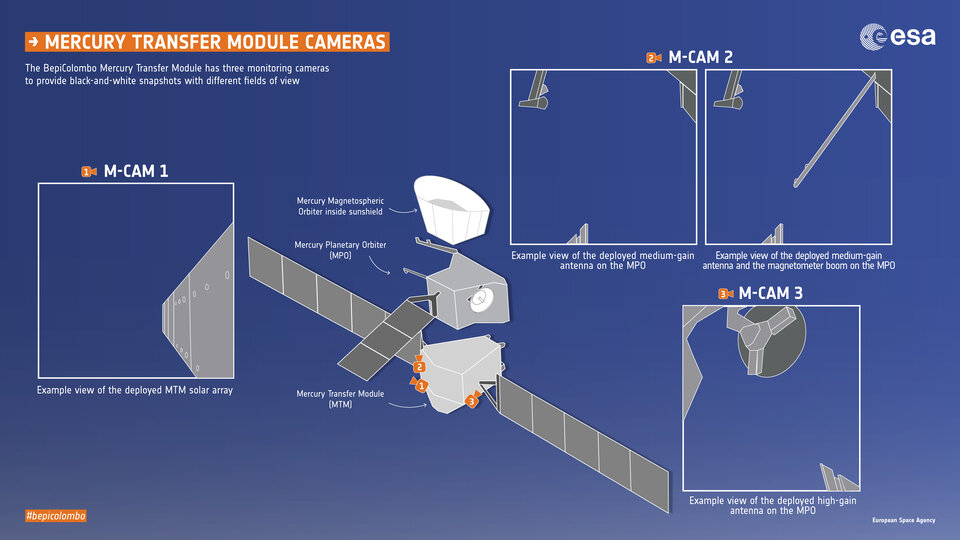
The first images will be downlinked within a couple of hours after closest approach and are expected to be available for public release from the afternoon of 20 June onwards. The closest images are expected to reveal a host of prominent geological features including large craters, volcanic and tectonic terrain.
All images will also be released in ESA’s Planetary Science Archive in the following days.
Follow the flyby
Follow #MercuryFlyby with Twitter accounts @esaoperations and @bepicolombo together with @ESA_Bepi, @ESA_MTM and @JAXA_MMO for updates.
Quelle: ESA
----
Update: 21.06.2023
.
Europe's BepiColombo spacecraft zooms within 150 miles of Mercury in close flyby
Quelle: ESA
----
Update: 23.07.2023
.
First BepiColombo flyby of Mercury finds electron rain triggers x-ray auroras
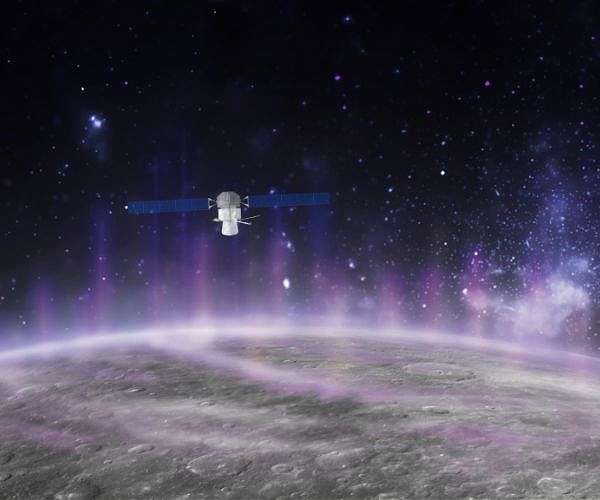
Artist's representation of ESA/JAXA's BepiColombo mission flying through precipitating electrons that can trigger X-rays auroras on the surface of Mercury.
BepiColombo, the joint European Space Agency (ESA) and Japanese Aerospace Exploration Agency (JAXA) mission, has revealed how electrons raining down onto the surface of Mercury can trigger high-energy auroras.
The mission, which has been enroute to the Solar System's innermost planet since 2018, successfully carried out its first Mercury flyby on 1 October 2021. An international team of researchers analysed data from three of BepiColombo's instruments during the encounter. The outcomes of this study have been published in the scientific journal, Nature Communications.
Terrestrial auroras are generated by interactions between the solar wind, a stream of charged particles emitted by the Sun, and an electrically charged upper layer of Earth's atmosphere, called the ionosphere. As Mercury only has a very thin atmosphere, called an exosphere, its auroras are generated by the solar wind interacting directly with the planet's surface.
The BepiColombo mission consists of two spacecraft, the Mercury Planetary Orbiter (MPO) led by ESA, and the Mercury Magnetospheric Orbiter (MMO, named Mio after launch) led by JAXA, which are currently in a docked configuration for the seven-year cruise to the final orbit. During its first Mercury flyby, Bepicolombo swooped just 200 kilometres above the planet's surface. The observations by plasma instruments onboard Mio enabled the first simultaneous observations of different kinds of charged particles from the solar wind in the vicinity of Mercury.
Lead author, Sae Aizawa, of the Institut de Recherche en Astrophysique et Planetologie (IRAP), now at JAXA's Institute of Space and Astronautical Science (ISAS) and University of Pisa, Italy, said: "For the first time, we have witnessed how electrons are accelerated in Mercury's magnetosphere and precipitated onto the planet's surface. While Mercury's magnetosphere is much smaller than Earth's and has a different structure and dynamics, we have confirmation that the mechanism that generates aurorae is the same throughout the Solar System."
During the flyby, BepiColombo approached Mercury from the night side of the northern hemisphere and made its closest approach near the morning side of the southern hemisphere. It observed the magnetosphere on the daytime side of the southern hemisphere, and then passed out of the magnetosphere back into the solar wind. Its instruments successfully observed the structure and the boundaries of the magnetosphere, including the magnetopause and bow shock. The data also showed that the magnetosphere was in an unusually compressed state, most likely due to high pressure conditions in the solar wind.
The acceleration of electrons appears to occur due to plasma processes in the dawn side of Mercury's magnetosphere. The high energy electrons are transported from the tail region towards the planet, where they eventually rain down on the Mercury's surface. Unimpeded by an atmosphere, they interact with material on the surface and cause X-rays to be emitted, resulting in an auroral glow. Although auroras had been observed before at Mercury by the NASA MESSENGER mission, the processes triggering the X-ray fluorescence by the surface had not been well understood and witnessed directly to date.
The study was carried out by a research team composed of the French Institut de Recherche en Astrophysique et Planetologie (IRAP), Kyoto University, ISAS, the Laboratoire de Physique des Plasmas (France), the Max Planck Institute for Solar System Research (Germany), the Swedish Institute of Space Physics, Osaka University, Kanazawa University, and Tokai University. The work was partially supported through Europlanet 2024 Research Infrastructure funding from the European Commission under grant agreement No 871149.
Quelle: SD

